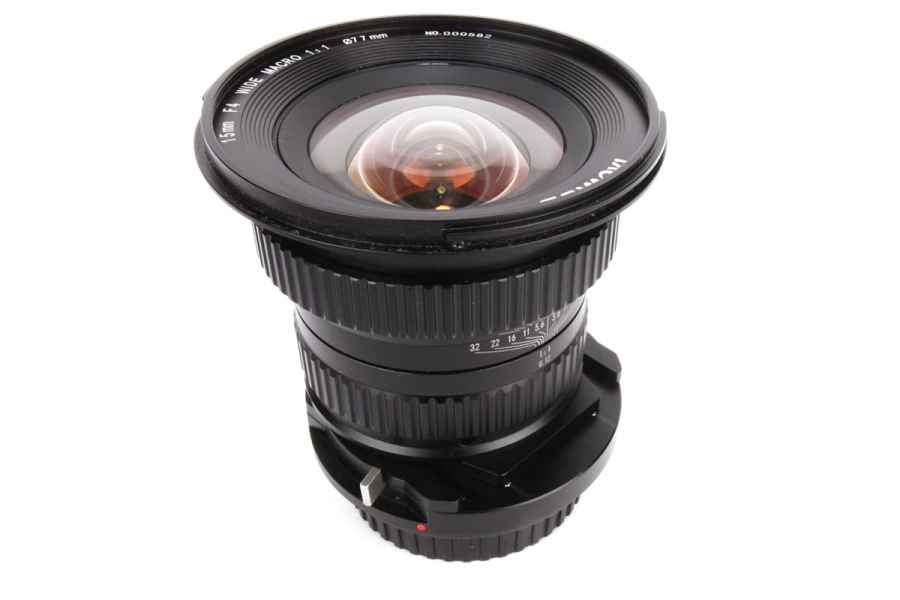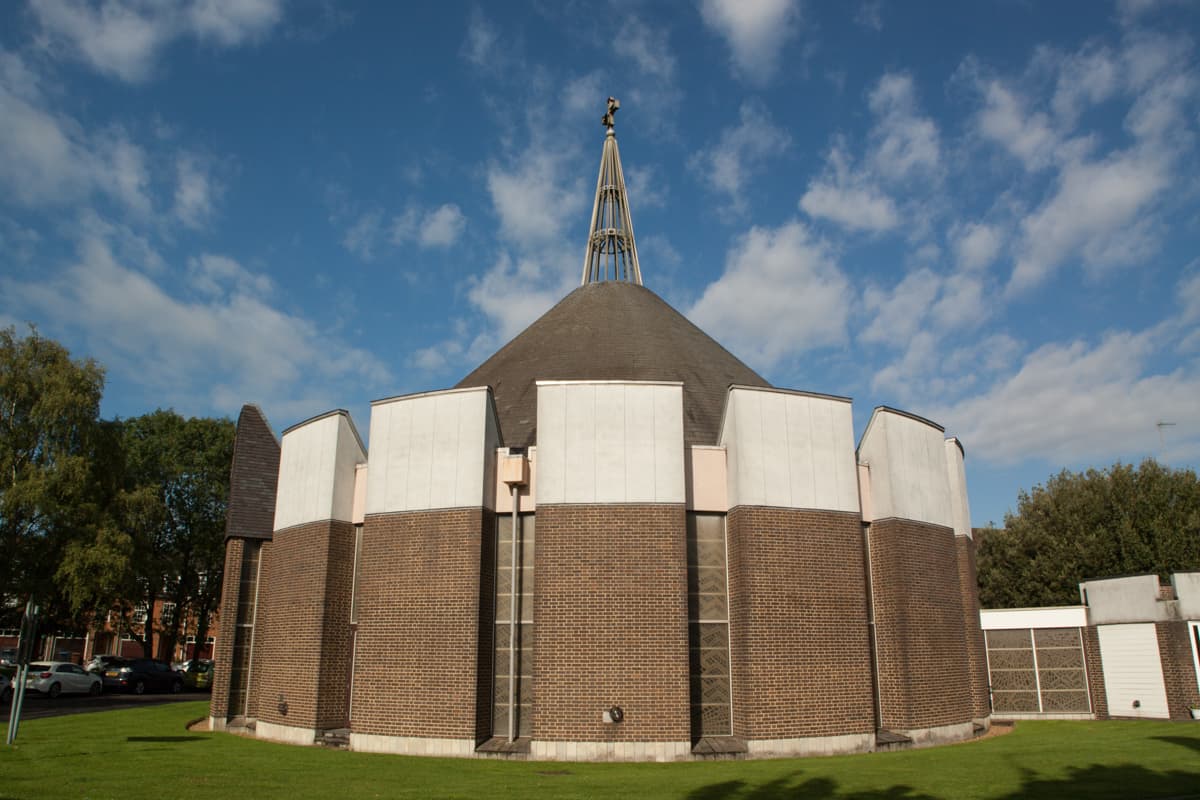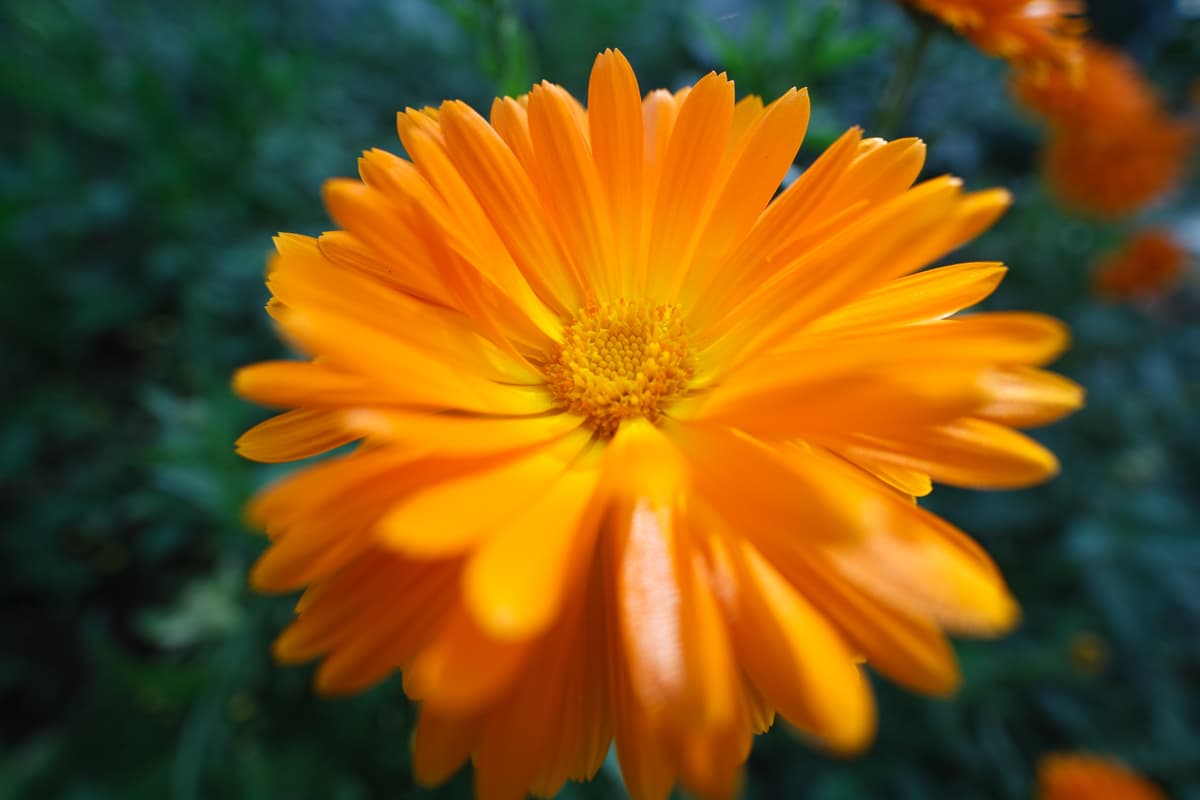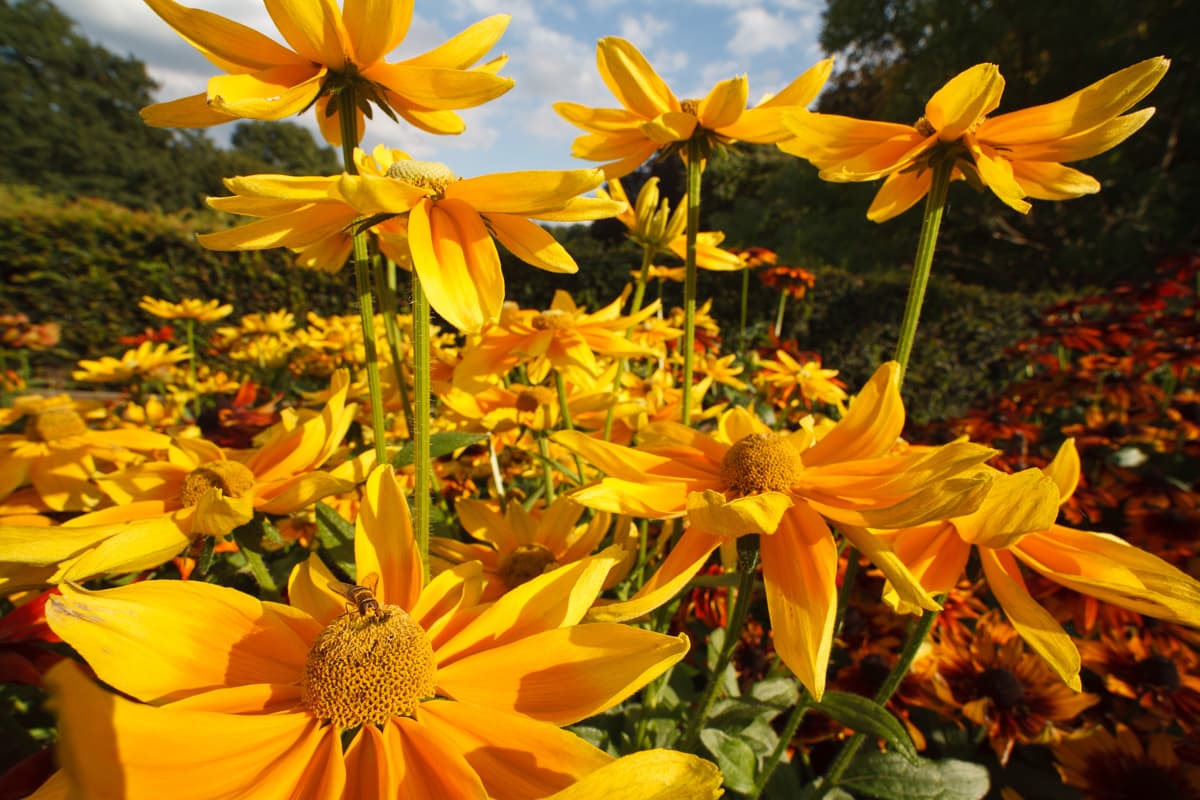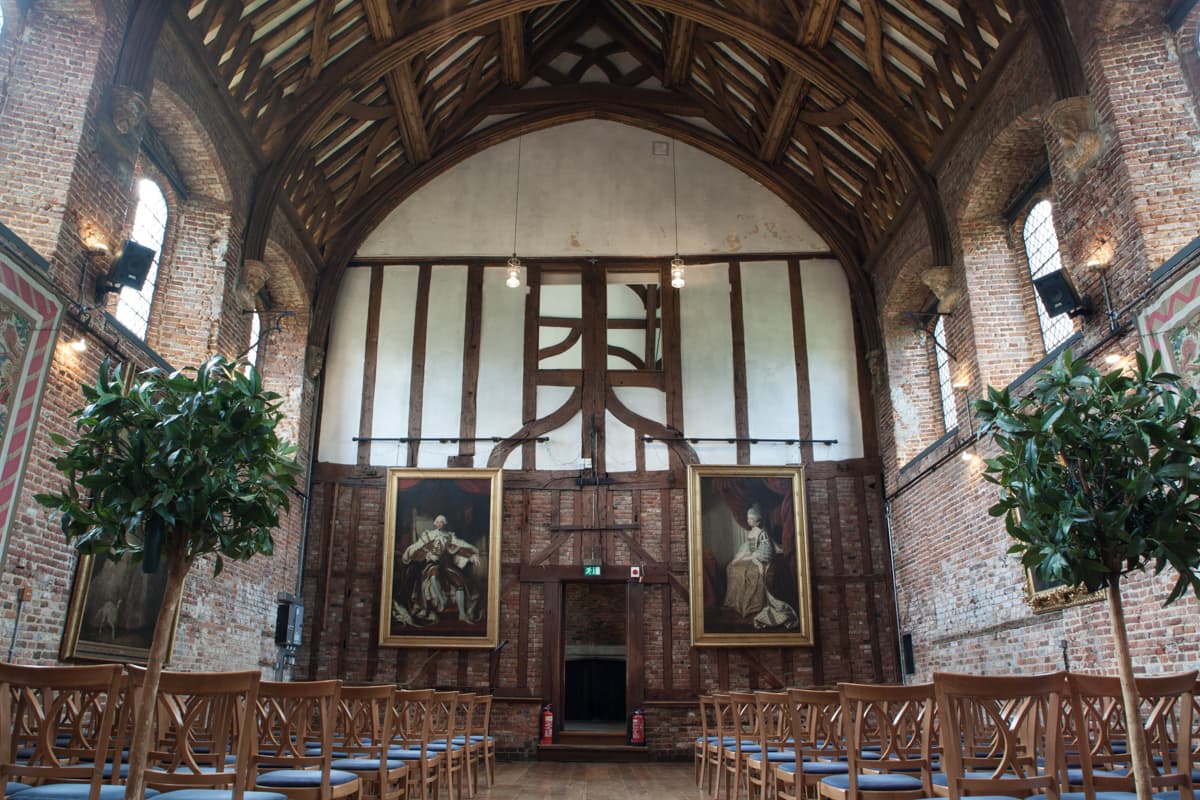It’s quite rare to come across genuinely innovative new lenses in the photography market. In general, all the major manufacturers know what sells and what doesn’t, and aim to make new designs with higher resolution, faster maximum apertures or extended zoom range. On the whole they aren’t terribly interested in trying something radically different from anything they’ve done before – and understandably so.
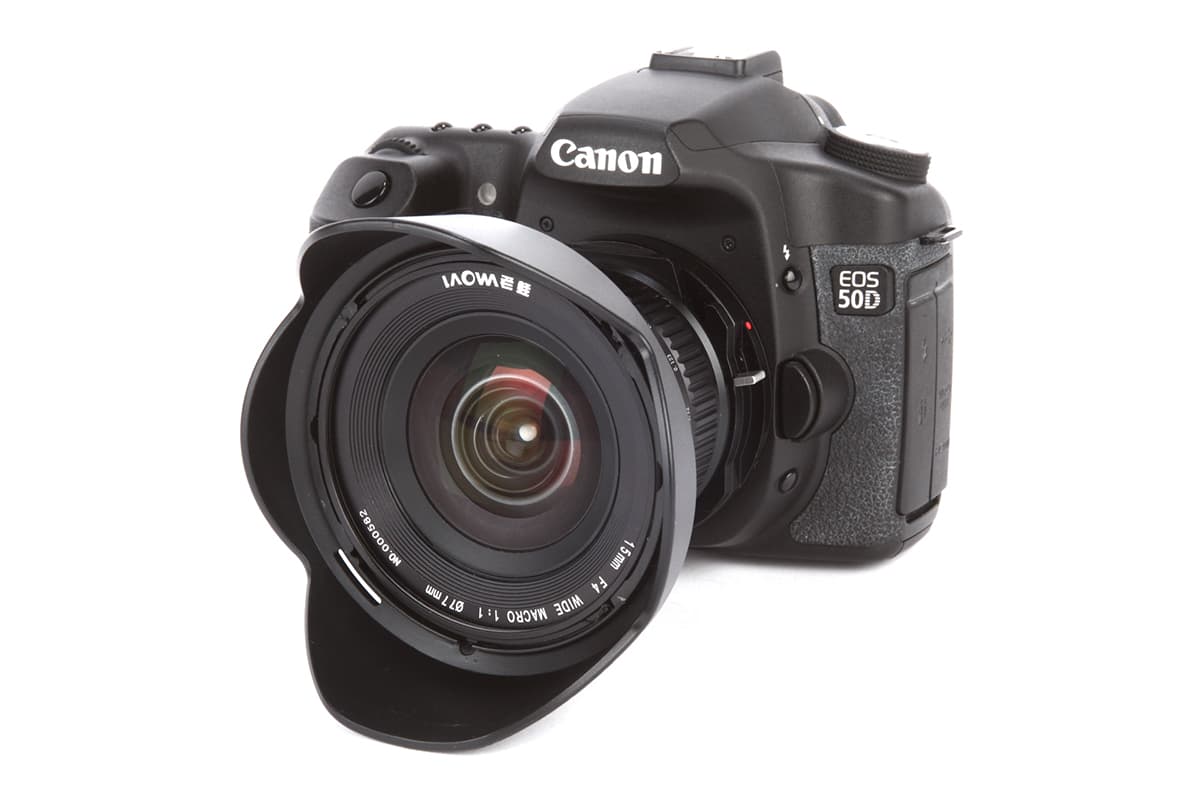
Seeing a niche to exploit, the Chinese lens maker Laowa (formerly known as Venus Optics) has decided to buck this trend and concentrate solely on making unusual macro lenses. We quite liked its 60mm f/2.8 lens that’s capable of twice-life-size reproduction, but the lens under consideration here is a completely different proposition.
It’s an ultra-wideangle 15mm prime for full-frame DSLRs that’s capable of 1:1 macro, which in itself is an interesting proposition. However, it also has a shift facility to provide perspective control when used on cameras with APS-C-sized sensors. There’s really nothing else quite like it.
Laowa LX FX 15mm f/4 Wide Angle 1:1 Macro review: Features
Before we go any further, let’s recap on what this lens can do.
First, it’s a 15mm f/4 wideangle lens for full-frame cameras, with fully manual focusing and aperture settings. It can focus extremely close, on a subject just 4.7mm from the front of the lens, which enables 1:1 macro. This means that the lens can project a life-sized image onto the camera’s sensor, so a subject measuring 36x24mm will fill the view when using a camera with a full-frame sensor.
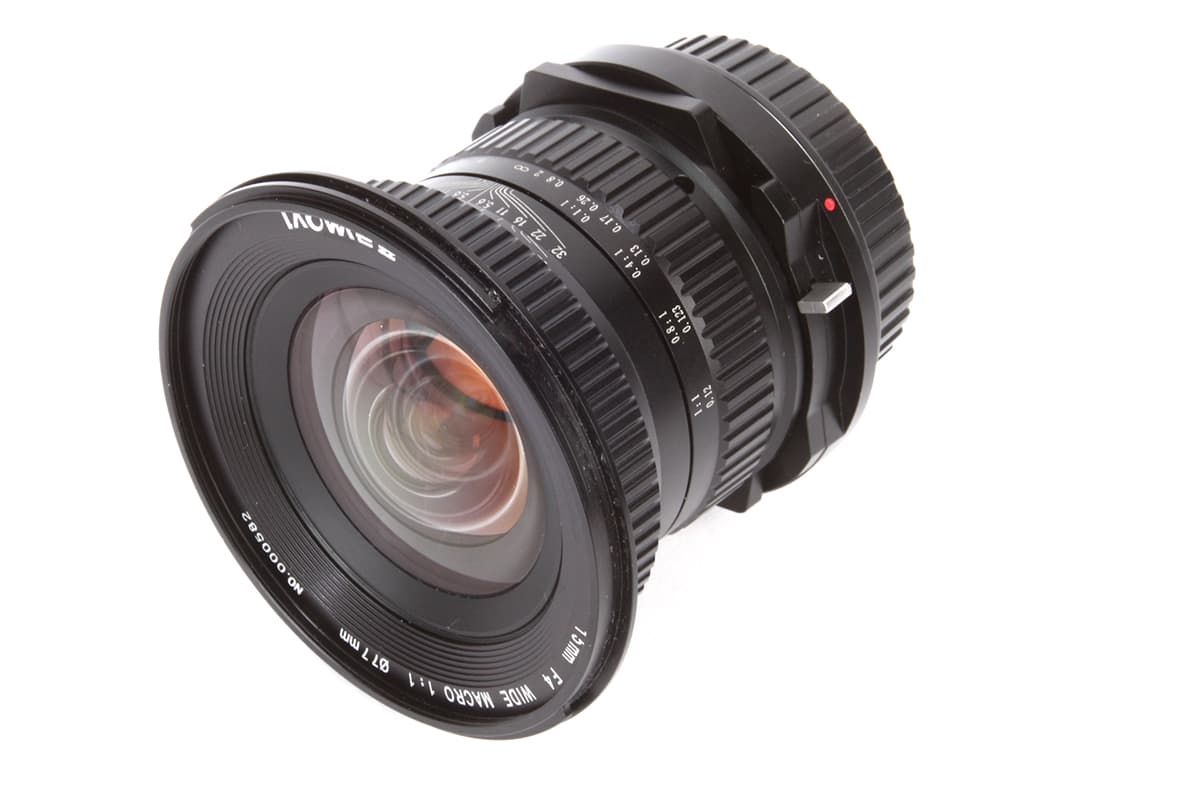
In addition, a sliding mechanism built into the lens barrel allows the optical unit to be shifted relative to the camera’s sensor, either upwards or downwards by up to 6mm, and with a click-stop at the centred position. This works just fine on cameras with APS-C sensors, but if you try it on a full-frame camera you’ll quickly see extreme vignetting as the lens’s image circle is exceeded.

Focus is set manually, using a ridged metal ring towards the centre of the lens barrel. It has distances marked in metric increments from infinity to 12cm, alongside a macro reproduction scale that ranges from 0.1:1 to 1:1. The aperture is also set manually, using a clickless ring towards the front of the lens that’s marked at 1-stop intervals from f/4 to f/32, and stops the diaphragm down directly as it’s turned.

The optical formula uses 12 elements in nine groups, including three of high-refractive-index glass and one of low-dispersion glass to minimise chromatic aberrations. The filter thread is 77mm in diameter and doesn’t rotate on focusing, meaning the lens can be used easily with filters such as polarisers and neutral density gradients. Surrounding it is a bayonet mount for the supplied HB-23 petal-type hood, which seems to be based on the Nikon one with the same designation, and can be reversed for storage. Our sample didn’t click into position very positively, though, which means it can easily be knocked out of alignment, and with a full-frame camera this will often result in unwanted vignetting.
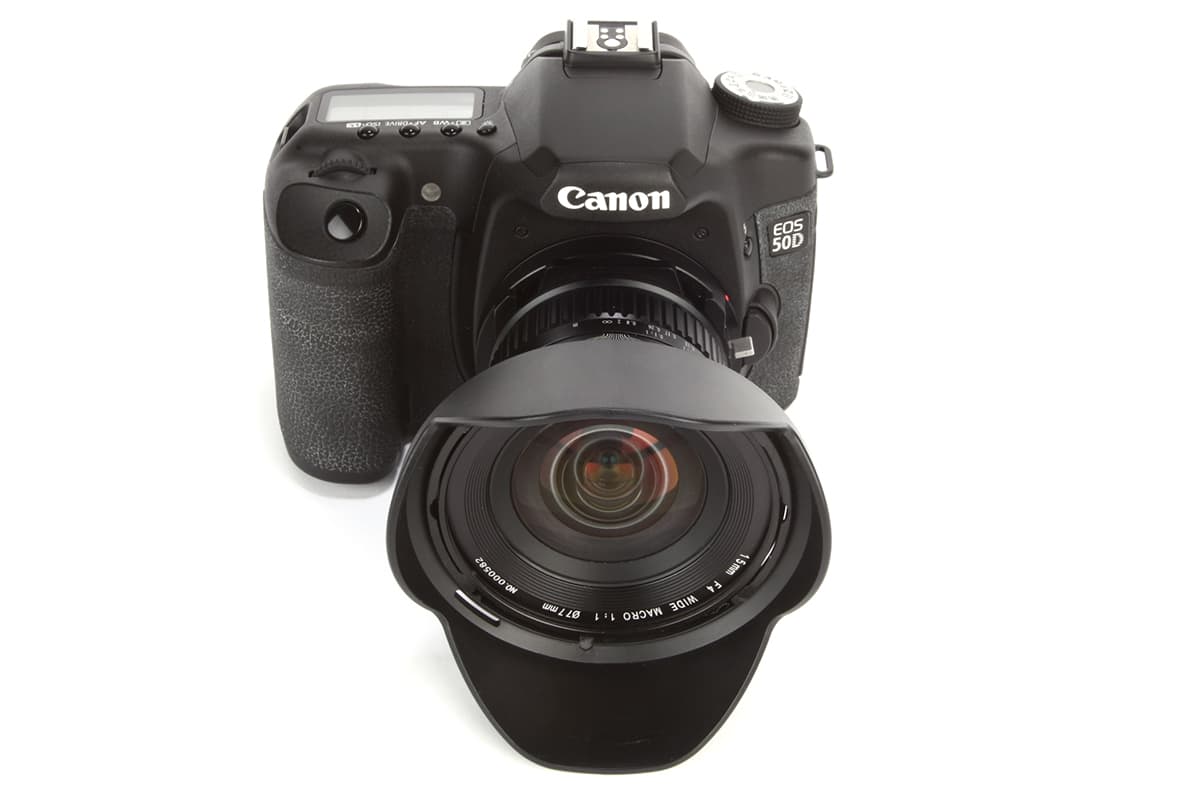
Laowa LX FX 15mm f/4 Wide Angle 1:1 Macro review: Build and handling
Almost the entirety of the lens’s exterior barrel is made from metal, giving a very solid feel to the build. However, the complete lack of any cosmetic styling, and the painted-on focus and distance scales that use mismatched fonts, give a decidedly utilitarian impression.
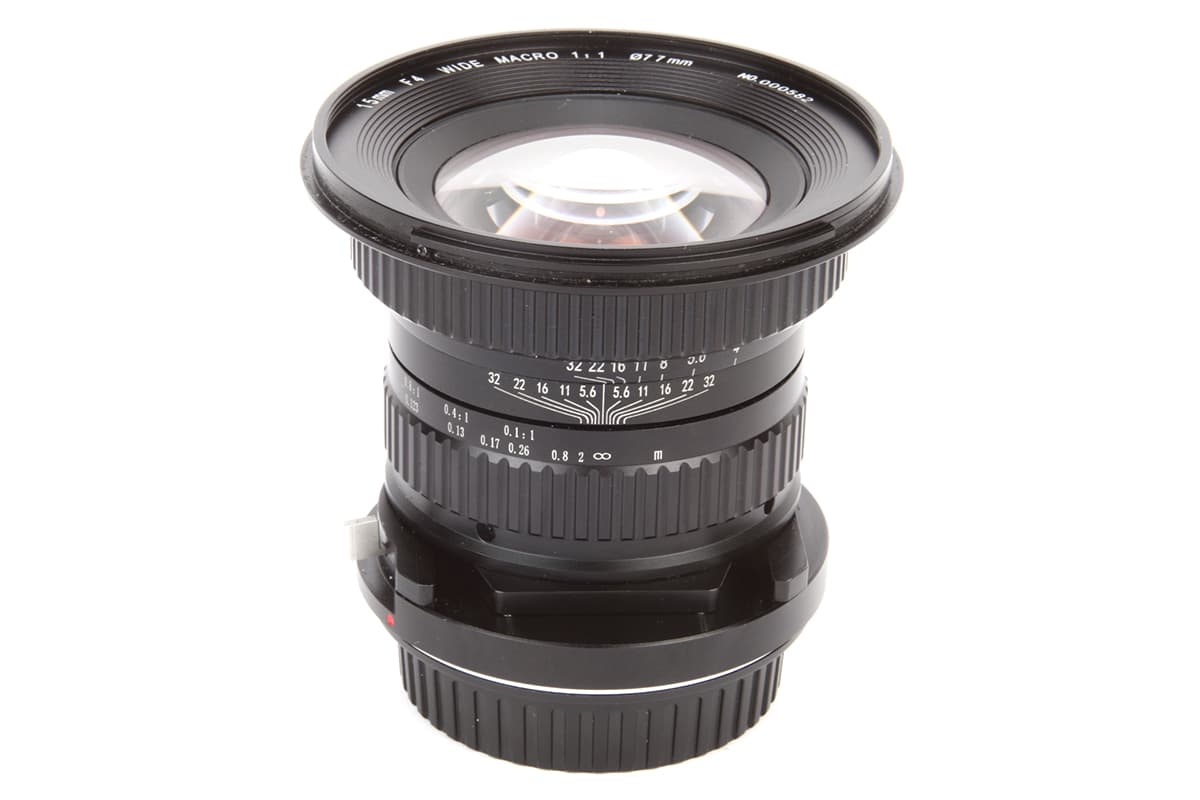
Operationally, both the aperture and focus rings rotate smoothly without any backlash. The shift mechanism is a slight let-down, though, as it operates by friction alone, and is released from the centred position by pushing an oddly shaped metal tab. In contrast, ‘proper’ shift lenses designed for architectural work use a precise geared movement instead, and often allow the direction of shift to be rotated relative to the sensor. But to be fair this would probably add considerably to the price.

Laowa LX FX 15mm f/4 Wide Angle 1:1 Macro review: Practical use
It should be clear by now that the Laowa 15mm is no ordinary lens, and this has an impact on almost everything you might do with it. Rather more than most lenses, it also has a distinctly different character depending on whether you’re shooting with a full-frame or APS-C camera.
Everything has to be focused manually, but on a lens this wide that’s no great hardship most of the time. However, if you’re using the optical viewfinder of a DSLR, you do have to make a point of keeping the aperture wide open, otherwise it will quickly go dark and make focusing difficult. Stopping down will also throw off the metering system, generally resulting in overexposure.

Its 21mm-equivalent view means that the Laowa can be used as a conventional wideangle prime on APS-C
Because of this, overall the lens works better with the camera set to live view. In this case the metering will still work with the lens stopped down, so you can shoot conveniently in aperture priority mode. The lens’s fully mechanical operation also means that it can easily be used on mirrorless cameras via a mount adapter.
Used as a wideangle prime, the 15mm f/4 is a fairly straightforward proposition, although its intense barrel distortion makes judging horizontals and verticals difficult and often results in tilted images. The short minimum focus distance certainly allows for really interesting compositions, especially as wideangle close-ups aren’t often seen (conventional macro lenses tend to be telephotos).
By the time you get to 1:1 reproduction, though, the working distance is less than 5mm from the front of the lens. In the real world, this means that you’ll frequently block your own light, or end up touching against part of the subject. I didn’t find the lens especially practical when trying to use it at such extreme magnifications.
Laowa LX FX 15mm f/4 Wide Angle 1:1 Macro review: Image quality
When it comes to image quality, the Laowa lens acquits itself pretty well. It is impressively sharp, even at close focusing distances, but the corners are inevitably a bit soft wide open, especially on full-frame cameras. However, in most cases I found image detail was limited more by slight focusing errors than by any flaw in the lens’s optics.
Chromatic aberration is visible as green and magenta fringing towards the corners of the frame, but isn’t overly objectionable. Likewise, while vignetting is obvious wide open, it becomes practically irrelevant from f/5.6 onwards. Flare is rarely too much of a problem, either, although like many wideangles the lens doesn’t particularly like having the light shine obliquely onto the front element.
The lens’s biggest flaw overall is distortion, which is pronounced on both APS-C and full-frame cameras. On the smaller format it manifests as fairly straightforward barrel-type bending of straight lines, but on full frame it’s rather more complex with pincushion-like re-correction into the corners.
Laowa LX FX 15mm f/4 Wide Angle 1:1 Macro review: Using Shift
If you use the Laowa 15mm on an APS-C camera, it can be shifted upwards or downwards relative to the sensor when shooting in landscape format. With a wideangle lens, this is normally used to correct converging verticals, and avoid having a building look like it’s falling over backwards.
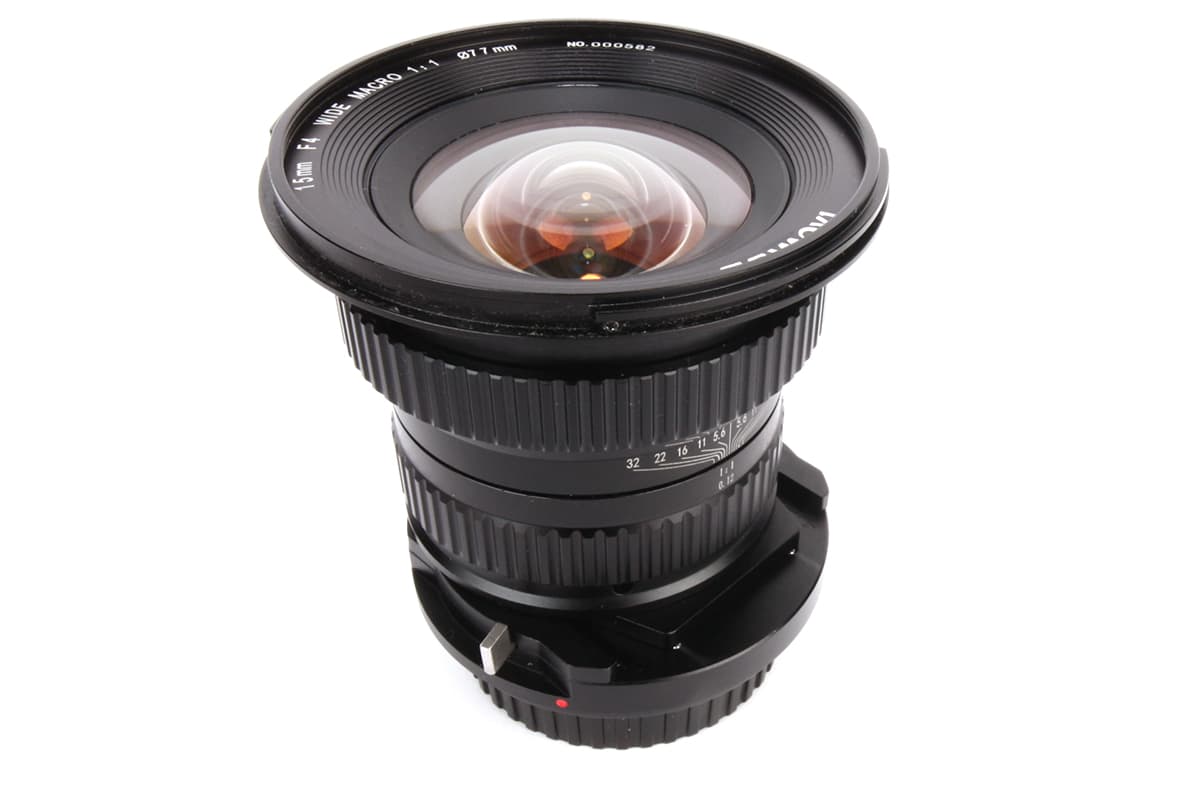
Unfortunately, while you can still do that with this lens, its strong barrel distortion means that it’s not necessarily the ideal choice for architectural work. The problem is that when the lens’s optical axis is moved off-centre relative to the sensor, you end up with complex asymmetric distortion that tends to look rather odd and is near-impossible to correct in software. In contrast, lenses that have been specifically designed for perspective control are usually near-perfectly corrected for rectilinear distortion. The rather primitive sliding shift mechanism doesn’t help, either, as it’s difficult to make precise adjustments to the lens’s position.
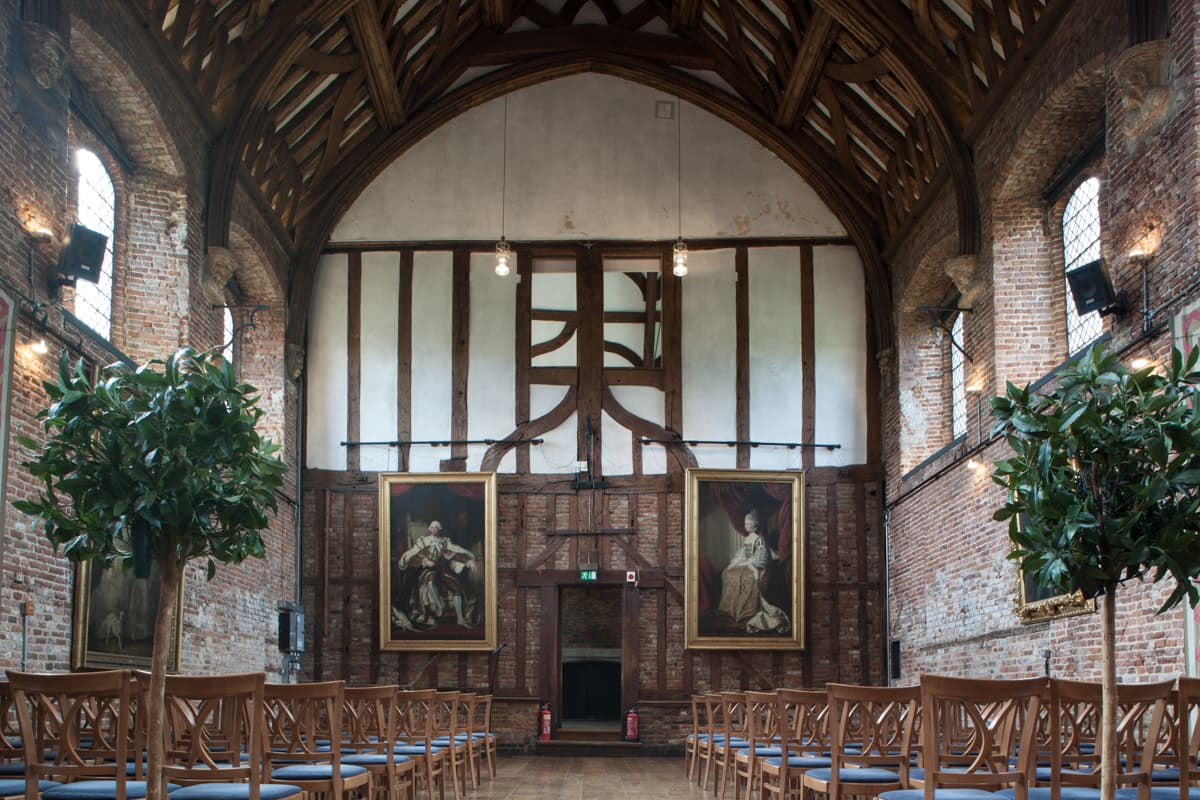
Shifting the lens upwards allows the camera to be kept level, which means vertical lines remain parallel
This doesn’t mean that shift isn’t a useful creative tool with this lens, just that it’s best used with less geometric subjects that don’t have straight lines running across a large fraction of the frame. The shift mechanism does let you adopt interesting angles for close-ups, such as shooting from low down without having to angle the camera upwards, or alternatively looking down onto a subject.
Laowa LX FX 15mm f/4 Wide Angle 1:1 Macro review: Resolution, shading and curvilinear distortion
Resolution

MTF50 vs aperture
The 15mm gives decent results in our Applied Imaging MTF tests, here on the full-frame Canon EOS 5D Mark III. Wide open at f/4 it’s pretty sharp in the centre, but the corners lag some way behind. They improve on stopping down, though, with the sharpest overall results at f/8. Stopping down further results in progressive diffraction softening, with f/32 generally best avoided unless extended depth of field is paramount.
Shading
With the lens’s small optical unit and wide view, it’s no great surprise to see quite strong vignetting at f/4, with 1.8EV fall off in illumination at the corners on full frame. This diminishes on stopping down, and by f/8 it drops to below 1EV, which is unlikely to be troublesome in practical use.
Curvilinear distortion
Not unusually for a wideangle, the Laowa 15mm shows rather pronounced distortion. It’s rather complex too, being of the ‘moustache’ type with strong barrel distortion towards the centre of the frame (and therefore in the APS sensor area) that’s re-corrected into the corners. This doesn’t matter for macro, but is undesirable for other subjects.
Laowa LX FX 15mm f/4 Wide Angle 1:1 Macro review: Verdict
With its unusual combination of features, the Laowa 15mm f/4 Macro is one of the most intriguing lenses I’ve used for some time. Its combination of ultra-wideangle view and close focusing allows for unusual images, and the shift capability gives additional creative options for APS-C users. However, it still has a distinctly niche appeal. For most macro shooting, a longer lens usually works better, and its strong distortion is a problem when using shift for perspective control (to be fair, it’s not specifically designed for this purpose).

Despite all this, I enjoyed using the lens, mainly because it allows you to explore the world from a decidedly unusual perspective. It certainly won’t be for everyone, but I’m sure a lot of enthusiast photographers will find it to be an inspiring creative tool.

